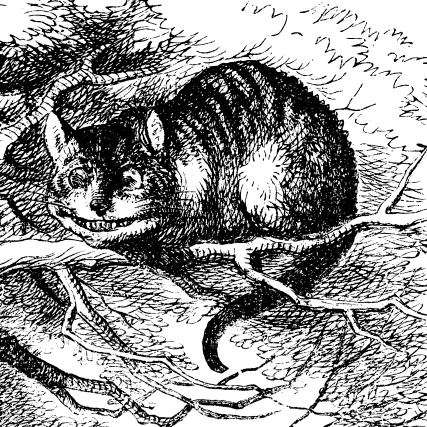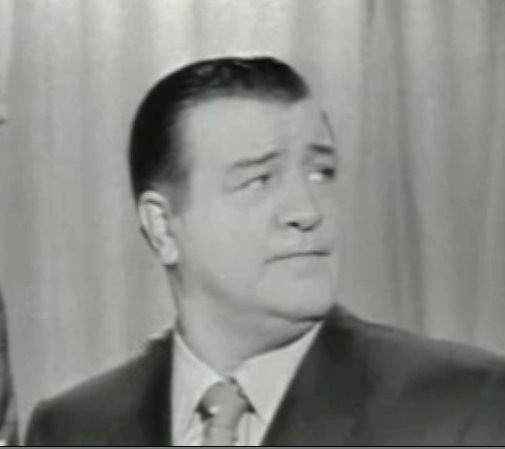|
Babbit And Catstello
Babbit and Catsello are fictional characters, based on the comedic duo Abbott and Costello, that appeared in Warner Bros. animated cartoons. The characters appeared in three cartoons between 1942 and 1946. Overview Although the short, fat character calls the other one "Babbit", the tall, skinny one never addresses his partner by name; the name "Catsello" for the short, fat character was invented later. In their first three cartoons, Babbit was voiced by Tedd Pierce, and Mel Blanc performed Catsello. Appearances ''A Tale of Two Kitties'' Originally, the pair were cats in pursuit of a small bird for their meal in the 1942 Bob Clampett-directed cartoon ''A Tale of Two Kitties'', a cartoon notable for the first appearance of the bird character who would eventually become Warner Bros. cartoon icon Tweety. The hapless duo fail in every attempt to capture the bird, establishing the pattern that would be used time and again in future Tweety cartoons. ''Tale of Two Mice'' Three years lat ... [...More Info...] [...Related Items...] OR: [Wikipedia] [Google] [Baidu] |
Looney Tunes
''Looney Tunes'' is an American Animated cartoon, animated comedy short film series produced by Warner Bros. starting from 1930 to 1969, concurrently with its partner series ''Merrie Melodies'', during the golden age of American animation.Looney Tunes . ''www.bcdb.com'', April 12, 2012 Then some new cartoons were produced from the late 1980s to the mid 2010s as well as other made productions beginning in 1972. The two series introduced a large List of Looney Tunes and Merrie Melodies characters, cast of characters, including Bugs Bunny, Daffy Duck, and Porky Pig. The term ''Looney Tunes'' has since been expanded to also refer to the characters themselves. ''Looney Tunes'' and ''Merrie Melodies'' were initially produced by Leon Schlesinger and animators Harman and Ising, Hugh Harman and Rudolph Ising from 1930 to 1933. [...More Info...] [...Related Items...] OR: [Wikipedia] [Google] [Baidu] |
Frank Tashlin
Frank Tashlin (born Francis Fredrick von Taschlein, February 19, 1913 – May 5, 1972), also known as Tish Tash and Frank Tash, was an American animator, cartoonist, children's writer, illustrator, screenwriter, and film director. He was best known for his work on the ''Looney Tunes'' and ''Merrie Melodies'' series of animated shorts for Warner Bros., as well as his work as a director of live-action comedy films. Animator and brief career as cartoonist Born in Weehawken, New Jersey, Tashlin drifted from job to job after dropping out of high school in New Jersey at age 13. In 1930, he began working for John Foster as a cartoonist on the ''Aesop's Fables'' cartoon series, then worked briefly for Amadee J. Van Beuren, but he was just as much a drifter in his animation career as he had been as a teenager. Tashlin joined Leon Schlesinger's cartoon studio at Warner Bros. as an animator in 1933, where he was known as a fast animator. He used his free time to start his own comic stri ... [...More Info...] [...Related Items...] OR: [Wikipedia] [Google] [Baidu] |
Animation Based On Real People
Animation is a method by which still figures are manipulated to appear as moving images. In traditional animation, images are drawn or painted by hand on transparent celluloid sheets to be photographed and exhibited on film. Today, most animations are made with computer-generated imagery (CGI). Computer animation can be very detailed 3D animation, while 2D computer animation (which may have the look of traditional animation) can be used for stylistic reasons, low bandwidth, or faster real-time renderings. Other common animation methods apply a stop motion technique to two- and three-dimensional objects like paper cutouts, puppets, or clay figures. A cartoon is an animated film, usually a short film, featuring an exaggerated visual style. The style takes inspiration from comic strips, often featuring anthropomorphic animals, superheroes, or the adventures of human protagonists. Especially with animals that form a natural predator/prey relationship (e.g. cats and mice, coyo ... [...More Info...] [...Related Items...] OR: [Wikipedia] [Google] [Baidu] |
Film Characters Introduced In 1942
A film also called a movie, motion picture, moving picture, picture, photoplay or (slang) flick is a work of visual art that simulates experiences and otherwise communicates ideas, stories, perceptions, feelings, beauty, or atmosphere through the use of moving images. These images are generally accompanied by sound and, more rarely, other sensory stimulations. The word "cinema", short for cinematography, is often used to refer to filmmaking and the film industry, and to the art form that is the result of it. Recording and transmission of film The moving images of a film are created by photographing actual scenes with a motion-picture camera, by photographing drawings or miniature models using traditional animation techniques, by means of CGI and computer animation, or by a combination of some or all of these techniques, and other visual effects. Before the introduction of digital production, series of still images were recorded on a strip of chemically sensitiz ... [...More Info...] [...Related Items...] OR: [Wikipedia] [Google] [Baidu] |
Fictional Mice And Rats
Fiction is any creative work, chiefly any narrative work, portraying individuals, events, or places that are imaginary, or in ways that are imaginary. Fictional portrayals are thus inconsistent with history, fact, or plausibility. In a traditional narrow sense, "fiction" refers to written narratives in prose often referring specifically to novels, novellas, and short stories. More broadly, however, fiction encompasses imaginary narratives expressed in any medium, including not just writings but also live theatrical performances, films, television programs, radio dramas, comics, role-playing games, and video games. Definition Typically, the fictionality of a work is publicly marketed and so the audience expects the work to deviate in some ways from the real world rather than presenting, for instance, only factually accurate portrayals or characters who are actual people. Because fiction is generally understood to not fully adhere to the real world, the themes and context of ... [...More Info...] [...Related Items...] OR: [Wikipedia] [Google] [Baidu] |
Fictional Cats
This is a list of fictional cats and felines and is a subsidiary to the list of fictional animals. It includes a limited selection of notable felines from various works, organized by medium. More complete lists are accessible by clicking on the "Main article" link included above each category. For fictional large felids such as lions and tigers, see List of fictional big cats. In literature This section deals with notable cat characters that appear in literature works of fiction including books, comics, legends, myths, folklore, and fairy tales. Any character that appears in several pieces of literature will be listed only once, under the earliest work. In books In comics In legends, myths, folklore and fairy tales In media This section deals with notable cat characters that appear in media works of fiction including film, television, animation, and puppetry. Any character that appears in several pieces of media will be listed only once, under the earliest work. In ... [...More Info...] [...Related Items...] OR: [Wikipedia] [Google] [Baidu] |
Looney Tunes Characters
{{Disambiguation ...
Looney or loonie may refer to: People * Looney (surname) * Looney or lunatic, antiquated term for mentally ill person * LoOney (born 1980), Serbian singer-songwriter, actor, director and comic artist * Looney, nickname of William Hinde (1900–1981), British Army major general * Looney, nickname of Rudy Williams (1909–1954), American jazz saxophonist Other uses * '' The Looney: An Irish Fantasy'', a 1987 comic novel by Spike Milligan * "Looney", an early version of the poem "The Sea-Bell" by J. R. R. Tolkien * ''Loonies'', 2002 Dutch family film * Loonie, common name for the Canadian one dollar coin, which bears an image of the loon * Looney Labs, a small company known for the Fluxx line of card games See also * ''Looney Tunes'', a Warner Bros. animated cartoon series * Luni (other) * Loney (other) Loney may refer to: *Loney (name) *''The Loney'', 2014 novel by Andrew Michael Hurley See also * *Looney (other) {{dab ... [...More Info...] [...Related Items...] OR: [Wikipedia] [Google] [Baidu] |
The Sylvester & Tweety Mysteries
''The Sylvester & Tweety Mysteries'' is an American animated television series produced by Warner Bros. Animation which aired from September 9, 1995 to February 5, 2000 on Kids' WB. The final episode, containing the segments "The Tail End?" and "This Is the End", was never shown on Kids' WB, not premiering until December 18, 2002, when the show aired in reruns on Cartoon Network. 52 episodes were produced. Premise The show follows Looney Tunes characters Sylvester and Tweety, along with their owner Granny and bulldog Hector (Sylvester's foil in many 1950s era shorts, here given a redesign similar to Marc Antony), as they solved mysteries around the world. Sylvester, of course, is still trying to eat Tweety in the meantime, with Hector acting as the bird's bodyguard. The first season was dedicated to the memory of Friz Freleng, Warner Bros. animator and original creator of the Sylvester and Tweety shorts, who had died at age 88 shortly before the series premiered. The show ori ... [...More Info...] [...Related Items...] OR: [Wikipedia] [Google] [Baidu] |
Yosemite Sam
Yosemite Sam ( /joʊˈsɛmɪti/ ''yoh-SEM-ih-tee'') is a cartoon character in the ''Looney Tunes'' and ''Merrie Melodies'' series of short films produced by Warner Bros. His name is taken from Yosemite National Park. He is an adversary of Bugs Bunny. He is commonly depicted as an extremely aggressive, gunslinging outlaw or cowboy with a hair-trigger temper and an intense hatred of rabbits, Bugs in particular. In cartoons with non-Western themes, he uses various aliases, including "Chilkoot Sam" (named for the Chilkoot Trail; Sam pronounces it "Chilli-koot") and "Square-deal Sam" in '' 14 Carrot Rabbit'', "Riff Raff Sam" in ''Sahara Hare'', "Sam Schultz" in '' Big House Bunny'', "Seagoin' Sam" in '' Buccaneer Bunny'', "Shanghai Sam" in '' Mutiny on the Bunny'', "Von Schamm the Hessian" in ''Bunker Hill Bunny'', "Baron Sam von Schpamm" in '' Dumb Patrol'', and many others. During the golden age of American animation, Yosemite Sam appeared in 33 shorts made between 1945 and 1964. ... [...More Info...] [...Related Items...] OR: [Wikipedia] [Google] [Baidu] |
Robert McKimson
Robert Porter McKimson Sr. (October 13, 1910 – September 29, 1977) was an American animator and illustrator, best known for his work on the ''Looney Tunes'' and '' Merrie Melodies'' series of cartoons from Warner Bros. Cartoons and later DePatie–Freleng Enterprises. He wrote and directed many animated cartoon shorts starring Bugs Bunny, Daffy Duck, Porky Pig, Foghorn Leghorn, Hippety Hopper, and The Tasmanian Devil, among other characters. He was also well known for defining Bugs Bunny's look in the 1943 short ''Tortoise Wins by a Hare''. Career Born in Denver, Colorado, McKimson spent ten years gaining an art education at the Lukits School of Art. The McKimson family moved to California in 1926 and he then worked for Walt Disney as an assistant animator to Dick Lundy, stayed with Disney's studio for a year and then joined the Romer Grey Studio located in Altadena, California, in 1930, a would-be animation shop started by the son of Western author Zane Grey, and finan ... [...More Info...] [...Related Items...] OR: [Wikipedia] [Google] [Baidu] |
Lou Costello
Louis Francis Cristillo (March 6, 1906 – March 3, 1959), professionally known as Lou Costello, was an American comedian, actor and producer. He was best known for his double act with straight man Bud Abbott and their routine "Who's on First?". Abbott and Costello, who teamed in burlesque in 1936, were among the most popular and highest-paid entertainers in the world during World War II. During a national tour in 1942, they sold $85 million in war bonds in 35 days. By 1955, their popularity waned from overexposure, and their film and television contracts lapsed. Their partnership ended in 1957. Early life Louis Francis Cristillo was born on March 6, 1906, in Paterson, New Jersey, the son of Helen Rege and Sebastiano Cristillo, a silk weaver and insurance sales agent. His father was Italian, from CasertaCostello, Chris and Raymond Strait."Lou's On First." New York: St. Martin's Press. in Campania, Italy, and his mother was an American of Italian, French and Irish ancestry (he ... [...More Info...] [...Related Items...] OR: [Wikipedia] [Google] [Baidu] |
Tweety
Tweety is a yellow canary in the Warner Bros. ''Looney Tunes'' and ''Merrie Melodies'' series of animated cartoons. The name "Tweety" is a play on words, as it originally meant "sweetie", along with "tweet" being an English onomatopoeia for the sounds of birds. His characteristics are based on Red Skelton's famous "Junior the Mean Widdle Kid." He appeared in 46 cartoons during the golden age, made between 1942 and 1964. Personality and identity Despite the perceptions that people may hold, owing to the long eyelashes and high-pitched voice (which Mel Blanc provided), Tweety is male although his ambiguity was played with. For example, in the cartoon "Snow Business", when Granny entered a room containing Tweety and Sylvester she said: "Here I am, boys!", whereas a 1952 cartoon was entitled '' Ain't She Tweet'' mphasis added Also, his species is ambiguous; although originally and often portrayed as a young canary, he is also frequently called a rare and valuable "tweety bird" ... [...More Info...] [...Related Items...] OR: [Wikipedia] [Google] [Baidu] |




